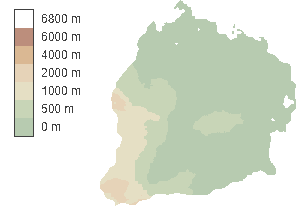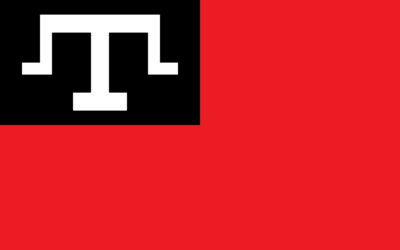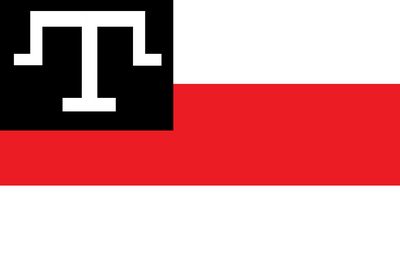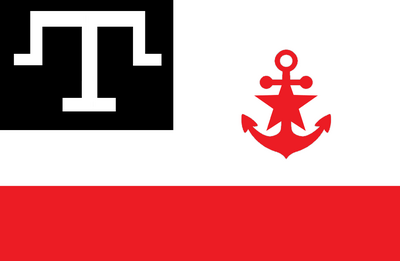Sahr
|
The kingdom of Sahrland
Sahrlandiya
|
|||||
|---|---|---|---|---|---|
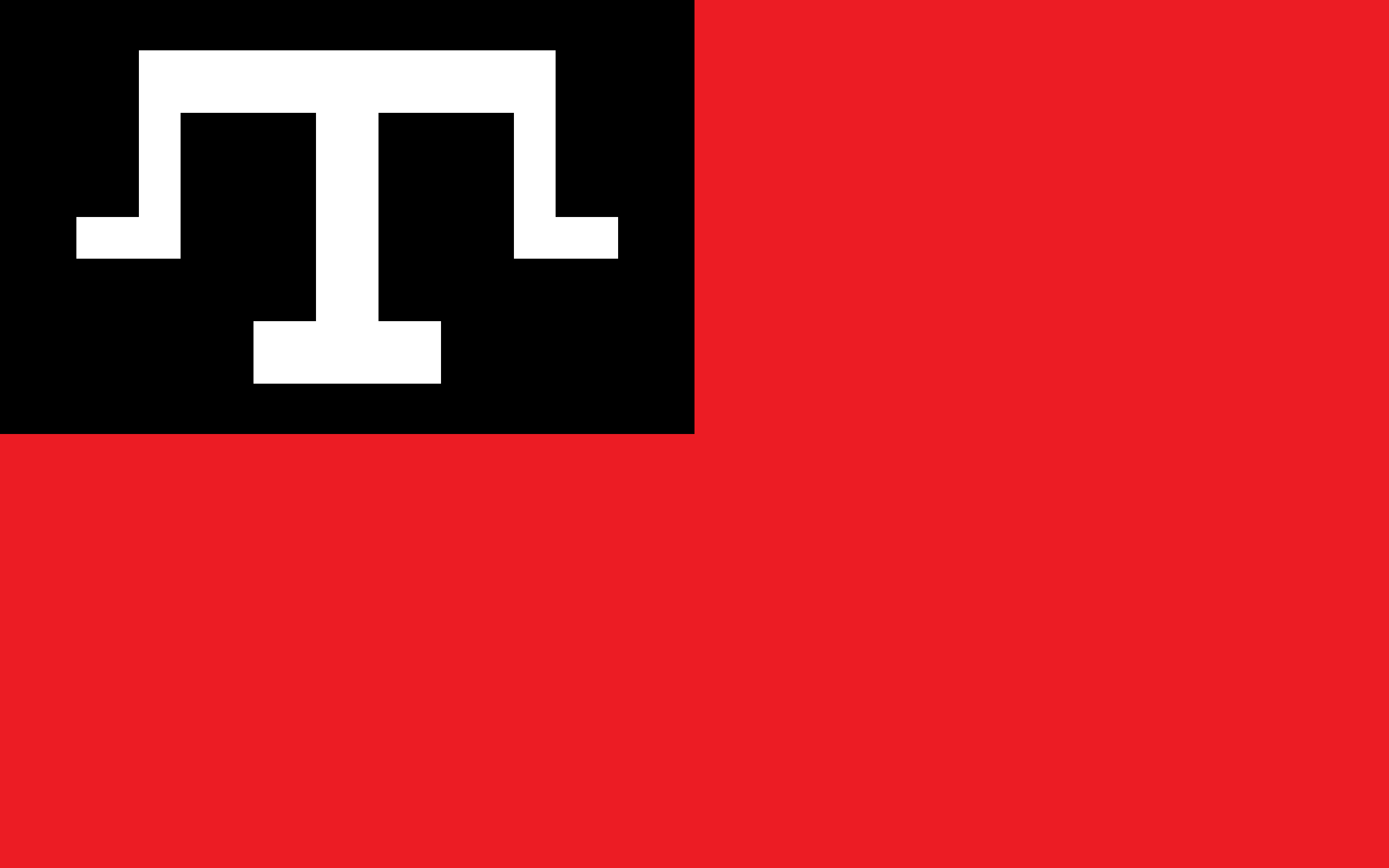 |
|||||
| Motto | "Slavsya, Sahr!" (Glory to sahr!) | ||||
| Common Name | Sahrland | ||||
| Anthem | "Slavsya, Sahr" | ||||
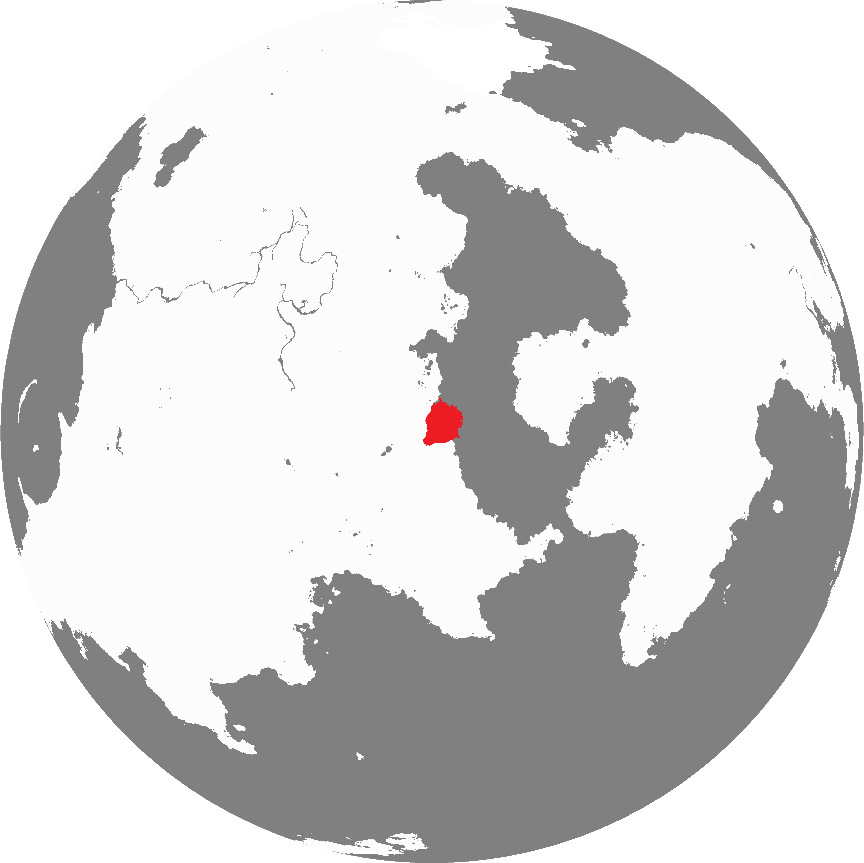 |
|||||
| Demonym | Sahren | ||||
| Official languages | Egercian, Tekkian | ||||
| Currency | {{{currency}}} | ||||
| Politics | |||||
| Capital | Khosa Dugthail |
||||
| Government | Constitutional monarchy | ||||
| Foundation | 2116 | ||||
| Preceded by | n/a | ||||
| Followed by | n/a | ||||
| Demography | |||||
| Ethnicities | Egercian | ||||
| Population | 10'000'000 | ||||
| Area | 69'420 km² km² | ||||
Sahrland, otherwise known as the Kingdom of Sahrland (Egercian: Ríocht na Sahrlandiya), is a hilly state north of Tekkia. Sahrland has an extensive coastline connecting to the Sea of Kolus. To the south lies Phoenia, and the large western steppe leads to Sceania. It's two capitols are Khosa and Dugthail.
Etymology
The name sahrland comes from the Burric Chevspendi people which would migrate into the area and alter the makeup of Egercia happening sometime before 2116. They would name the land they inhabited "sahrlands" and integrate into the peoples already there. It resulted in "Sahrland" representing the state and "Egercia" representing the people and the land. In modern times the two terms have come to be almost interchangeable.
Geography
Climate
The northern region of sahrland recieves significantly more rainfall than the deserts to the south and west of sahrland. The newer territories of Rokfor and Baile recieve less than the north but are still cooler than the deserts in Tekkia. All three regions provide important farmland to the nations which occupy and surround them.
Biodiversity
###
Urban Areas
Khosa was historically the capital of the country since it's creation in spite that Dugthail was often larger or equal in size. The city remained the location of the Parliamant and became the location of the Presidency while the location of the monarchy has remained in Dugthail since the 2139 coup. Other noteworthy areas are Klensagrad, named after the peninsula it inhabits, and Slovale, which is also coastal despite being significantly farther north. Sus is the farthest from the coast and the smallest, and is also the farthest south of all the cities in Sahrland proper. Within the two recently gained provinces of Baile and Kravsmad, there are 3 more significant cities, named Baile, Heidli and Rokfor respectively. Urban areas in the northern region are less populated and prosperous than the southern regions as the south has been untouched from the civil war and internal population migrations caused by the hysteria of 2160.
Politics
Government
Sahrland has two leaders, the king which is a hereditary title and the president which is an elected title. Additionally the parliament exists to ratify new laws. The king is not powerless like many constitutional monarchs, with both the president and king having executive power. Uniquely the presidential and parliamentary branches are set in Khosa, while the monarchy resides in Dugthail.
Subdivisions
There are four regions in Sahrland, Dugthail/Sahrland proper, Rokfor/Kravsmad, Baile, and Sahren Chadastok. The only significant changes in autonomy are to Sahren Chadastok, which is able to operate almost as it's own entity to the nations surrounding it. Power is largely concentrated in Dugthail/Sahrland proper.
Foreign Relations
The concept of Nemqurpolitik comes from the Chevspendi language meaning "Indifferent politics". The strategy has guided the Sahren nation since it's inception regardless of administration. It entails the Sahren people's will to disregard countries outside their own and to only care about them when something can be gained. From 2160 to 2200 Nemqurpolitik saw it's only decline as pan-Aontism spread.
Demographics
Languages
Official languages are Egercian and Tekkian, which are also the majority. Chevspendi (also called old sahren) is rarely used at all because Egercian was used a way to unify the country linguistically. The sahren Chadastok area is an exception, with a sizeable minority speaking orinian.
Education
###
Religion
###
Age
###
Military
Sahren Republican Guard-Air-corp
Sahren air doctrine revolves entirely around battlefield support and disruption of enemy air support. The airforce is integrated fully into the army as the Sahren Republican Air-corp.
Sahren Republican Guard
After the civil war the Sahren Republican Guard was formally created to make up for the dismissal of the masses of militia. It is stressed that the army is to be put under control over the state and de-politicized. The SRG since has become a very small professional force intent only on policing the borders of Sahrland. Since it's founding, the SRG has only fought in border conflicts with various groups like the South Sahrland Revolutionaries and Free Army of Hartfordia. Many have come to question the gutted force's effectiveness in a conventional war.
The Sahren Republican Navy was created in theory at the beginning of the civil war. It held no vessels until the destruction of junta forces in entirety, when the SN khosa and SN Medraria were seized in drydock undergoing repairs. The khosa was unused after sahrland's defeat to Ophir which started the civil war in the first place, and Medraria barely finished production in time for the beginning of the civil war. Chadastok forced seized an incomplete Slovale class hull named "No.117". Post war the Sahren Republican Navy purchased two destroyers from phoenia, and continued developing the Slovale and Blokha class, which were once more cancelled in the hysteria of 2160. Sahren Republican Navy has seen no combat since it's founding and has little in the name of naval theory or experience.
Korych
The Korych are an organization that make up of the most trained and equipped Sahren paratroopers. Their separation from the Sahren Republican Guard allows for operational flexibility the SRG lacks.
Economy
Taxation
###
Transport
###
Energy and Infrastructure
###
Trade
###
Science
###
History
Chevspendic Horde(2050-2106) The Chevspendi were a small group of nomadic people in unclaimed territories of inner kolus. They spent most of their history battling with eachother and migrating across the lands. The Chevspendi were led by oligarchs called Cynaz, which were often rich and famous members of the Horde. Towards the end of this era power was distributed among fewer and fewer cynaz until there were only four, among which was cynaz Miden Lavro. Cynaz Lavro was able to convince or intimidate the other Cynaz into a plan to settle the Horde in the Sahrlands. He declared himself Prince of Sahrlandiya shortly after
Foundation of the sahren state(2106-2116)
The principality of sahrland was founded in 2106, around the time of the collapse of tekkia. The state was an absolute monarchy under prince Miden lavro the first. The stability of the state would be a large hinderance, due to the tensions between those adopting egercian language and culture and those who cling onto their burric history. the unrest in tekkia at the time garunteed no threat of annexation. during this time the monarchy would gain absolute power over the state, earning Miden lavro the nickname "iron ruler". Sahrland would participate in wars with two other states in an effort to conquer and unite egercia, called "Grand duchy of Kravsmad" and the "Kingdom of Medraria". This war was later known as the War of the Egercias. Sahrland nearly defeated Kravsmad, but the sahren army was quickly beaten and routed when Medrarian forces crossed the border. The government was forced to flee to slovale. Phoenia annexed chosaint and marched northward into south egercia to secure the farmlands. A ravaged sahrland quickly took the opportunity to push back. The combined Kravsmad-Medraria forces could not stand up to both sides. Sahrland reclaimed all of the land it lost. Although plans did exist to annex sahrland into the Union state, both countries were suffering from the affects of war and were unwilling to commit to another, and there was little desire in the Tekkian leadership to take the Dugthail region.
Journey of the first principality(2116-2139)
Prince Miden Lavro passed, and his son named in his honour, would take the throne. Prince Miden Lavro the second would instead be known as a great reformer. Under his leadership the popularity of the government rose due to a growing economy and increased international relations. though his reign was cut short when he died of a stroke, leaving his teenage son Kirbo Lavro to rule. In the instability following, the "Movement for Sahren democracy" began to amass power, to the point where kirbo lavro was forced into agreeing to a constituion. this continued only for a short time. The parliament was shut down later in an attempt to return to absolute monarchy. This overstepping of power was a disaster for public support. Before any political factions could take advantage of the unrest, they began to fight eachother to ensure their side won. The government lost control of much of the country in the crisis and the military high command under chief of army Alekzander Kholsahr would launch a coup to take control of state affairs until kirbo lavro was deemed fit to rule again, beginning the junta period.
Junta(2139-2141)
The government of the junta was run as an oligarchy run by the military high command. Sahren inaction caused the formation of the terror group "South Sahrland Revolutionaries" (SSR). The "Movement for sahren democracy" and "Worker's party" merged to form the "Republican party" after fleeing into Phoenia. The "Sahren labour party" split and fled into ophir, supporting the ganap rebellion until severe persecution by the Ophirian republic forced them out. The Junta would also support phoenia diplomatically in the partition of Grestin but never actually fought. Soon after the junta joined the coalition forces in the burr war. Stahlsieg units defected to Surnay taking control of several federal republics. The sahren expeditionary force joined Nuvan forces but only participated in minor skirmishes as the Stahlsieg units in Schrschnell had already been defeated. The joint force participated in destruction of media containing "Schrschnell" due to cultural clashes. Zokesian administation threatened action if this did not cease.
Wartime unrest(2141-2143)
The Sahren labour party launched an uprising to take advantage of the overseas military. They overran garrisons at the capital city of khosa as well as slovale, but would not be able to take sus, dugthail, or klensagrad. These chaotic revolutions would be called "Pozhar revolts". Revolutionaries succeeded at linking up but entered into modern trench warfare and bogged down. Junta launched Operation Kerosene which involved air-land coordination and amphibious assaults across the lakes to achieve surprise. Junta forces opened the first siege of Slovale. The Labour party was destroyed and forced into hiding. The Nuvastian administation entered a period of revolt similarly and the state collapsed. Coalition decided to put a foriegn state in power to rebuild a functional government. Due to Sahrland's precarious positioning and lack of power, they were chosen as the most likely candidate to not abuse the power. The treaty of Phoezi declared the territory sahren. Unrest in the Wardia province proved nearly impossible to quell so Zokesia demanded the territory, which was negotiated with sahrland gaining other concessions. Additionally the treaty of Chadastok was signed with orion, which led to the purchase of Sahren Chadastok.
War of the straits of Aonta(2143-2144)
Following ophirian aggression to celepran and south comer, the junta publically demanded no action occur to these nations to preserve balance in the region. Ophir ignored this demand, and war would break out. Public support for the war was low. The klensagrad harbour strikes resulted in many losing their lives in a violent crackdown. The war would not end in a junta victory at all, the pride of the fleet SN-Indestructible was destroyed by ophirian aircraft as well as the entire airforce and Phoenian volunteer group. the Phoenian federal union state pressured both sides into peace, the initial talks were very harsh, with ophir demanding military bases on both sahrland and phoenia. Both staunchly rejected, and the war dragged on until Ophir settled on a white peace called the treaty of cath. Both states entered periods of unrest afterward.
Sahren Civil War (2144-2146)
Following the treaty of Cath political dissidence increased. Factions prepared for revolutions. The Republican party secretely conspired to Lavro Loyalists to start a revolt in Dugthail. In 2144 The Republicans launched an insurrection in Sus, the labour party launched an insurrection after in klensagrad and another pocket in the north attempted to march to slovale. the National salvation party launched an issurection in the north to also seize Slovale. several parties aligned to the sahren factions would also rise up in sahren nuvastia. The various factions overran the Junta quickly. Kirbo Lavro led an uprising in Dugthail and declared his support of the Republicans as soon as they entered the city. The junta collapsed shortly after the Labour party siezed control of Slovale. The National salvation party would began the second siege of slovale. Labour party and NSP evacuated from Nuvastia. The National salvation party launched an offensive before Republican forces from nuvastia could arrive but modern trench warfare had set in. Most of the world began to back Republicans. The "Klensagrad commune" split off of the labour party and attempt to push the Republicans out of the Klensagrad peninsula. only a few weeks afterward, a Zokesian taskforce near the area sighted the red and black banner over klensagrad and in horror the Admiral ordered to bombard the city. During the bombardment Ancom naval batteries heavily damaged one ship and lightly damaged others. The zokesi bombardment resulted in most of the Ancom naval batteries to be destroyed, and damage to the industrial ability to make war. The national salvation party were outflanked by the Labour party, beginning the third siege of Slovale. The republicans won in klensagrad against the Ancoms. The freed up troops created a breakthrough which completely overran all other factions.
Aftermath
The various civil war leaders had varying success after the war. Gerbin ostalost (NSP) was shot dead by a Republican militiaman trying to escape into the Vagani region. Anastasia otsahrlandiagorodtsev (LP) attempted to flee to Arcadia, but the plane she was on was shot down by an elite chadastok squadron led by ace pilot Dimitri "del" chevarra. Kirbo lavro was granted the title of king of sahrland to appease lavro loyalists. Republican chief of army Nedfry svoboda was elected as the first president of the country. Chief of army Alekzander Kholsahr was killed in the fighting at Khosa. Haidan Potop (Chadastok) was kept as the General of the Chadastok People's Militia after giving back control of the city to the Republicans. 80% of Slovale was destroyed, 13% of Khosa was destroyed, 32% of Klensagrad was destroyed, and 2 and 3% of Sus and Dugthail were destroyed respectively. The fighting bled 7% of the sahren population and 4% of the bastian population away.
Post-war golden age (2146-2160)
After the civil war, Nedfry Svoboda declared the Sahrland-Bastia commonwealth, Containing the territories of Bastia, Upper bastia, Sahrland, and Chadastok. His reign oversaw a massive overhaul of all states he reigned over. The masses of conscripts provided a massive labour pool, which was used in the process of rebuilding the nation. Investment from all over kerbin (albeit mostly from tekkia) created a time of prosperity. At this time the nation was under a one party state, which would have to change, it was mandated after 2150 the first elections would begin and the Republican coalition government would dissolve. Svoboda also declared the South Sahrland Revolutionaries a terrorist organization and begun counter terror operations in 2146. The sahren republican guard claimed victory the next year but the SSR would not be pacified until 2154. in early 2148 the treaty of Phoezi expired, which mandated a sahren removal from the Nuvastian area. For most of the year it was renegotiated and the bastia region was allowed to be independent, while upper bastia was to remain in the commonwealth. This outcome could be considered dissatisfactory for all. Soon, as sahren officials predicted, Nuvastia joined Zokesia. In 2150 the first elections occurred, with a dissolved republican party. The worker's party (the second largest part within the republican alliance) Supported civil war hero Karlo Frakchiya. His first act as president involved the recreation of Aonta by signing into a union with phoenia. As a condition the egercian provinces of Baile and Rokfor were transferred into Sahrland. Frakchiya's reign continued to foster the economic growth and peace in the previous years, with a more hardline approach. He oversaw the Chadastok-Hartfordia crisis, where the Chadastok People's Militia joined with hartford seperatists and began a guerilla campaign against the imperial union. By all accounts they were heavily beaten back until the Orion empire collapsed and granted hartfordia independence. Sahren republican guard had landed in the city by this time and took control. Perpetrators of the revolt were arrested for treason and Chadastok was stripped of it's right to an independent militia. On frakchiya's second term, he had narrowly won the election against both Daria Adaman and Gerbin Pridurok only because the liberal and conservative parties could not negotiate an alliance with another. The largest post civil war protest sahrland saw eventually forced Frakchiya to resign in 2156 and Adaman won the elections afterward. The Post war golden age ended in the Hysteria of 2160, which brought on complete economic collapse and reorganization.
the Forever Peace (2160-2200)
The hysteria of 2160 was not economic collapse, but a spontaneous reorganization caused by increased international trade and the difference in scale between the Egercian and Tekkian economies. Workers moved to the southern Egercian regions as they showed more opportunities than the war torn Dugthail region. Military spending and unrest settled to the lowest they've ever been in Sahren history. Power shifted southward as the north never properly recovered from war damages. The union with Phoenia strengthened as it was viewed less as a ploy to gain more Egercian territories and more as a genuine union. The Sahren government relinquished it's claim on Ria in 2171 in exchange for permanant control of Rockfor and Baile. This 40 year period of pure uninterrupted peace caused an increase in the population and steady economic growth. The legacy of the Republican party finally died in the 2165 election as the parties formed from it ended their loose alliances. In 2197 Bastia left Sahrland-Bastia and a day later Sahrland left the Commonwealth, ending 53 years of union and dropping Sahrland from secondary power to minor power status. By 2200 the topic of king Kirbo Lavro's demise has become unavoidable. His intervention in elections has proven a valuable asset in continuing the Forever Peace.
Notable Events
About The Flag
The flag originates from a Chevspendi tribal flag. The symbol in the canton comes from the house of Lavro, the only dynasty to ever rule sahrland. The red represents fraternity, livelehood, and blood spent to maintain it.
The first version of the Sahren naval jack was initially used for every seafaring vessel from the country, but by 2157 this version was restricted to civilian craft.
In 2157 the Sahren Republican Navy swapped to the second version of the Sahren Naval Jack.
